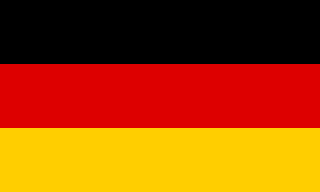 W
WThe flag of Germany is a tricolour consisting of three equal horizontal bands displaying the national colours of Germany: black, red, and gold. The flag was first sighted in 1848 in the German Confederation; with it being officially adopted as the national flag of the Weimar Republic from 1919 to 1933, and again being in use since its reintroduction in West Germany in 1949.
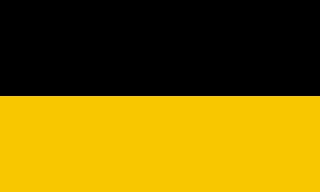 W
WThe flag of Baden-Württemberg has three variants. The civil flag (Landesflagge) has one design, while the state flag (Landesdienstflagge), has two designs. All three flags are a black over gold bi-color, while the state flag has one of two variants of the state arms centered on the flag.
 W
WThe flag of Baden displayed a combination of yellow and red, the heraldic colours of the former German state of Baden.
 W
WThere are officially two flags of Bavaria: the striped type and the lozenge type, both of which are white and blue. Both flags are historically associated with the royal Bavarian Wittelsbach family, which ruled Bavaria from 1180 to 1918.
 W
WThe flag of Brandenburg is a horizontal bi-color of red over white, with the arms of the state (land), in the center. The coat of arms of the state shows on a shield in white (silver) a red eagle, looking to the right, with wings decorated with trefoils in gold and armored gold. In its current form, the flag was adopted on 20 January 1991, with further enshrinement in Article 4 of the Constitution of the State of Brandenburg.
 W
WThe flag of Bremen consists of at least eight equal horizontal stripes of red alternating with white, and checked at the hoist. It is colloquially known as Speckflagge. The civil flag does not contain the coat of arms. The state flag exists in three versionsThe Dienstflagge, which is defaced with the middle coat of arms. The Staatsflagge, which is defaced with the flag version of the coat of arms and usually has twelve instead of eight stripes. The Dienstflagge der bremischen Schiffahrt, which is defaced with the flag version of the coat of arms in the centre and a blue anchor in a white canton. It is used on state buildings used for shipping and navigation, and as the jack on Bremen ships.
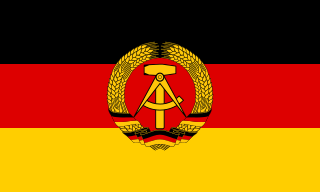 W
WThe flag of East Germany was the official national flag of the German Democratic Republic during its existence from 1949 to 1990. The flag's design and symbolism are derived from the flag of the Weimar Republic and communist symbolism. The flag was outlawed as an unconstitutional and criminal symbol in West Germany and West Berlin, where it was referred to as the Spalterflagge until the late 1960s.
 W
WThe flag of Silesia and Lower Silesia is a bicolor of silver and gold.
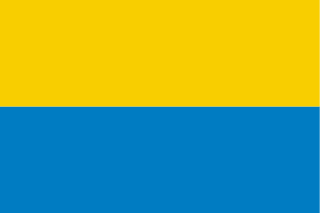 W
WThe flag of Upper Silesia is a bicolor of gold and blue.
 W
WThe flags of the German states may come in different variants. All states have a Landesflagge, that may be used by anyone. Some states have another variant, often showing the state coat of arms, called the Dienstflagge, normally for use by official government offices only. In addition to these flags, in a few states there are variants exclusively for the state senate, or for state-operated ships. In some cases there are specific flags for high-ranking officials, mainly used as car flags. Frequently, the flags are used in vertical variants.
 W
WThe Franconian flag is a symbol of Franconia, a region in North Bavaria and parts of Thuringia, Hesse and Baden-Württemberg in Germany.
 W
WThe flags of Frisia are the flags that are used to represent Frisia, a cross-border cultural region in Northwestern Europe. Some designs are in official use on a local or provincial level, while others are used unofficially on a regional, linguistic or international level.
 W
WThe German Fatherland Flag is a combination between the flag of Prussia and the flag of the Hanseatic League. The Fatherland Flag was first used as the flag of the North German Confederation which was formed in 1867. Later, after the Franco-Prussian War, the German Empire was founded. Germany would continue using it until the German Revolution of 1918–1919, which resulted in the founding of the Weimar Republic. The Weimar republic did not use it as a national flag. But the Weimar republic did use the flag in the Weimar Military. until the Nazi Party reinstated it as a co-official flag from 1933-1935 to pander to German conservatives.
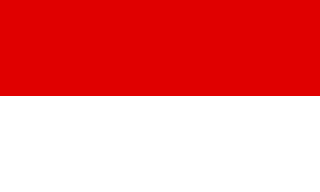 W
WThe civil flag of Hesse consists of a bicolor of a red top and a bottom white stripe, in the proportion 3:5. The state flag is similar, except it is emblazoned with the state coat of arms in the centre, and may only be used by government departments and services.
 W
WThe flag of Lower Saxony consists of the flag of the Federal Republic of Germany in Schwarz-Rot-Gold, with the coat of arms of Lower Saxony, shifted slightly toward the hoist. This flag is the civil and state flag. A double tailed version in 3:5 ratio is used as the state ensign.
 W
WThe flag of Mecklenburg–Vorpommern is the flag used by the German state of Mecklenburg-Vorpommern.
 W
WThe flag of the German State of North Rhine-Westphalia is a horizontal tricolor consisting of green, white and red.
 W
WThe state of Prussia had its origins in the separate lands of the Margraviate of Brandenburg and of the Duchy of Prussia. The Margraviate of Brandenburg developed from the medieval Northern March of the Holy Roman Empire, passing to the House of Hohenzollern in 1415. The Duchy of Prussia originated in 1525 when Albert of Brandenburg-Ansbach, a member of a cadet branch of the Hohenzollerns, secularized the eastern lands of the Teutonic Knights as a Polish fief. Prince-elector John Sigismund, Elector of Brandenburg, inherited the Duchy of Prussia in 1617, thus uniting Brandenburg and Prussia under one ruler in a personal union; the Elector's state became known as Brandenburg-Prussia. The Kingdom of Prussia formed when Elector Frederick III assumed the title of Frederick I, King in Prussia, on 18 January 1701.
 W
WThe term Reichskriegsflagge refers to several war flags and war ensigns used by the German armed forces in history. A total of eight different designs were used in 1848–49 and between 1867–1871 and 1945.
 W
WThe flag of Rhineland-Palatinate, also known as Rhineland-Pfalz, is a tricolor of three horizontal bands of black, red and gold. These colors are Germany's national colors and are sometimes referred to as schwarz-rot-gold. In the canton, or the upper left corner, is the coat of arms of the state of Rhineland-Palatinate.
 W
WThe flag of Saarland is based on the flag of Germany and is a black, red, and gold (yellow) horizontal tricolor. In the center of the flag is the coat of arms of Saarland. The flag of Saarland is both the civil flag, as well as the state service flag.
 W
WBoth the civil and state flag of the German state of Saxony feature a bicolour of white over green, similar to the Austrian province of Styria although they are historically not related to each other. The state flag is similar to the civil flag, except it is defaced in the centre with the coat of arms of Saxony. The colours of both flags were officially decided as state colours in 1815. The aristocracy used mostly and in first time the quadrangular and later the rectangular
 W
WThe flag of Saxony-Anhalt is a yellow and black bi-color, with the state's coat of arms centered on the flag.
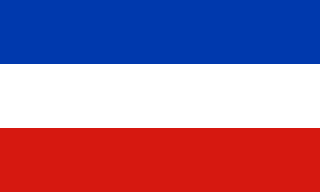 W
WThe flag of Schleswig-Holstein is a horizontal tricolour of blue, white, and red. Schleswig-Holstein is one of the 16 states of Germany, comprising most of the historical duchy of Holstein and the southern part of the former Duchy of Schleswig.
 W
WBoth the civil and state flag of the German state of Thuringia feature a bicolour of white over red. Introduced with the formation of the state of Thuringia within the Weimar Republic in 1920, it is the reverse of the flag of Hesse, both flags ultimately reflecting the heraldic colours of the Ludovingian rulers of the medieval Duchy of Thuringia. The flag's similarity to that of Poland is coincidental.